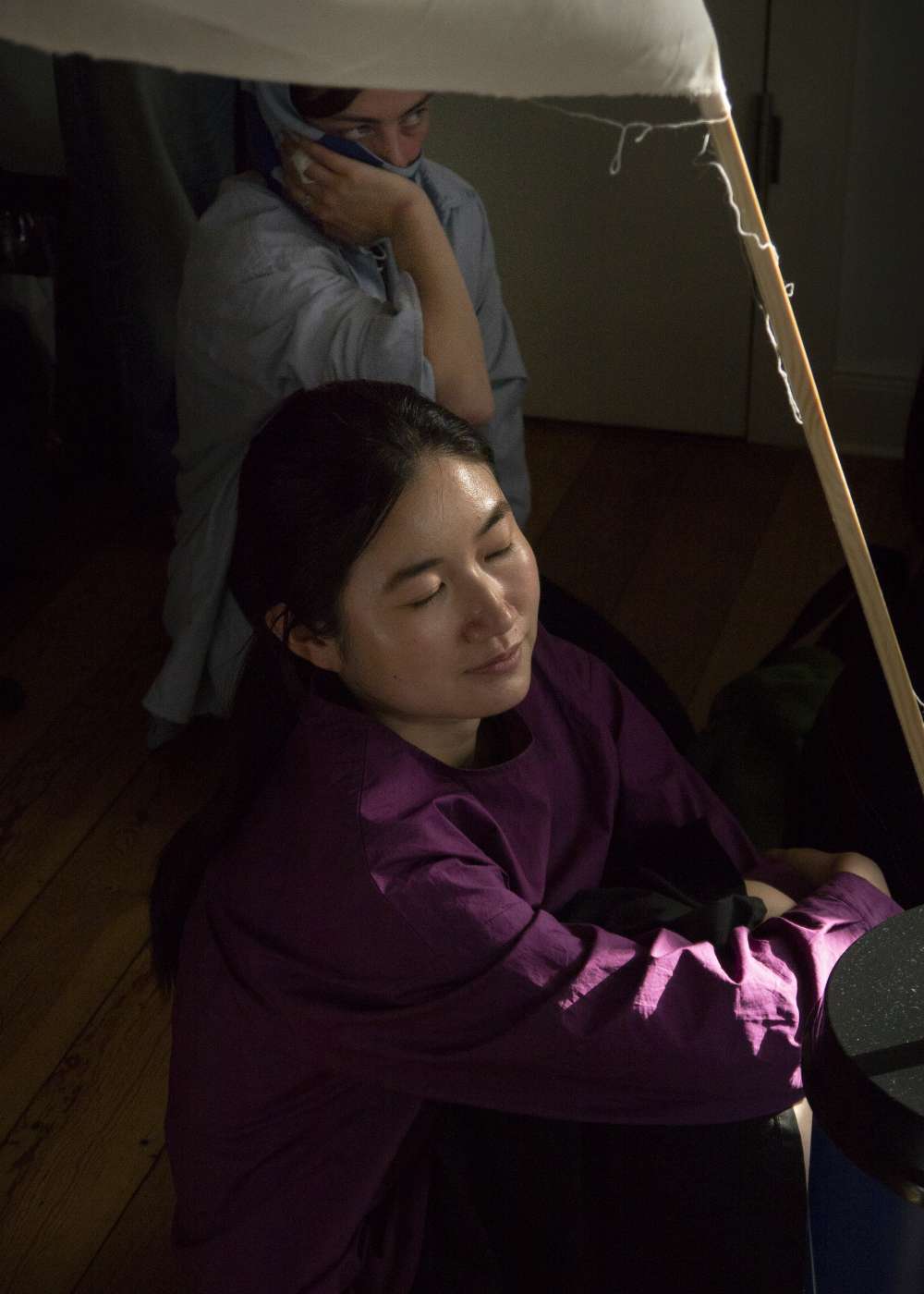Eine Performance mit Gerüchen zu dokumentieren ist eine besondere Herausforderung, da es keine Möglichkeit gibt, das Erlebte vollständig zu erfassen. Als die visuelle Dokumentation der Aufführung nicht so ausfiel wie geplant, beschloss ich, die Performance mit Textbeschreibungen, Ton, einigen Notizen aus meinen Recherchen und ein paar Bildern von den Reaktionen des Publikums darzustellen. Sie werden versuchen müssen, sich die Gerüche vorzustellen.
German abstract: Intervening (with) Smells
Read full version in
Intervening (with) Smells (English)
You are free to move around. If you feel unwell or have a reaction, you should leave the space.
Smells can profoundly affect you (via your mood, behavior, and thinking) even if you are not aware of them. (1) In fact, even the suggestion of an odor that is not present can affect mood. (2) When imagining smells, the same areas of the brain are activated as when you actually perceive a smell. (3)
»...the foulest odors were often those that were imagined... foreigners would always stink and possess the potential to contaminate.« (4)
20.06.2024. Freie Universität Berlin.
I have occupied the kitchen space at the Villa on Grunewalderstraße: physically, sonically, as well as through the atmosphere via smell.
I have overturned and stacked the tables and chairs, creating barriers, breaking up and shrinking the space. I have mounted large, blank, white banners and blank, white cardboard signs on long sticks and propped them up on the furniture, dominating the upper realms of the space.
There is a droning sound, intensifying and changing slightly in response to my actions.
Wearing a large white cloth draped around my neck and working on the floor, I invite the audience to sit with me as I release various smells.
...The smells are overlapping, layered, varying in duration, intensity, pungency and come from various sources: chemical liquids distributed by a fan, fumes released from chopping onions, distilled smells, spilled liquids, powdered materials activated with water, materials released from multiple tightly sealed containers.
As a reprieve from the intense smells people are offered individual cups of tea, with sage and mint.
Gallery with 13 images: »«
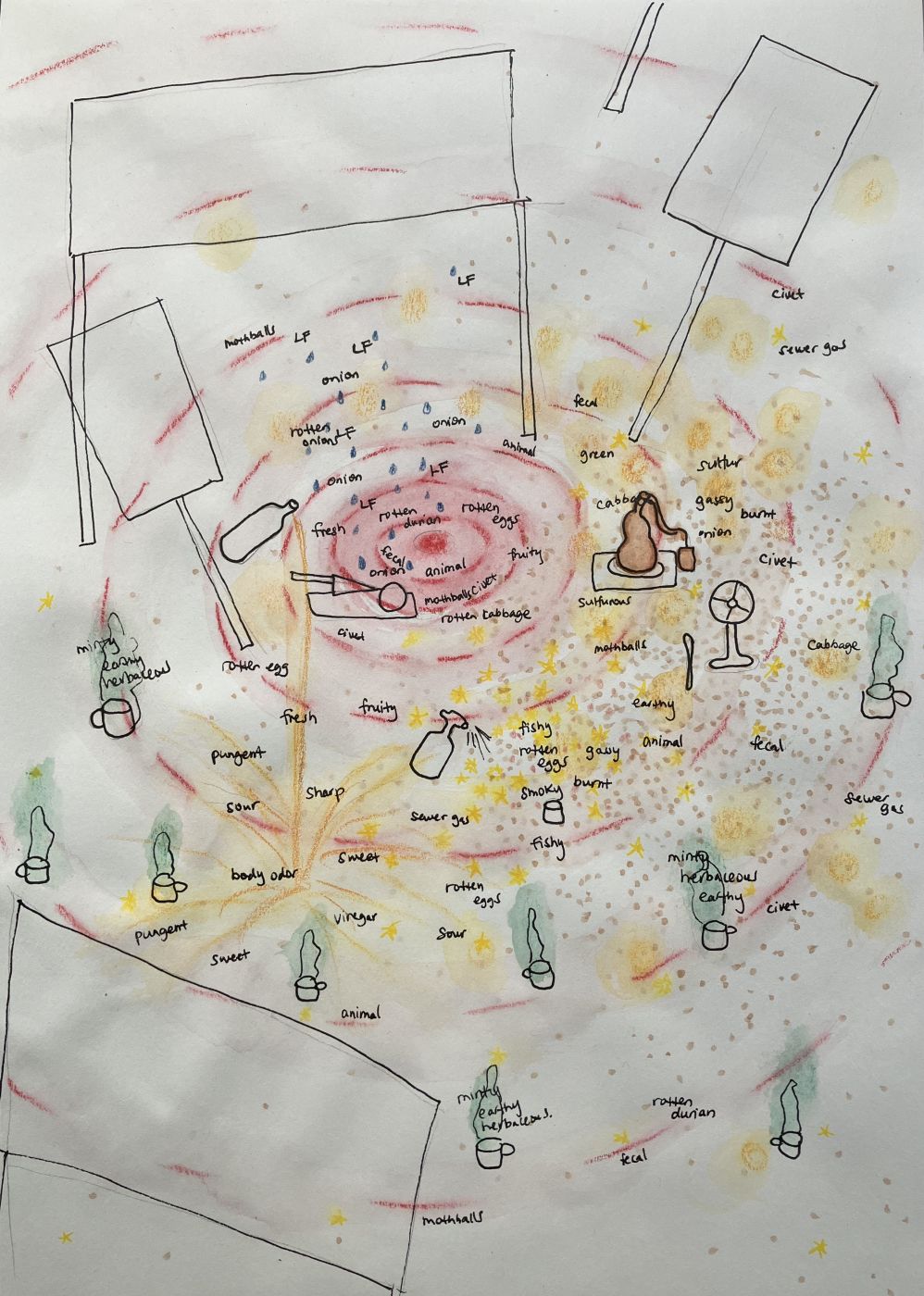
© Senya Corda
1/131/13
© Senya Corda
© Senya Corda
2/132/13
© Senya Corda
© Senya Corda
3/133/13
© Senya Corda
© Senya Corda
4/134/13
© Senya Corda
© Senya Corda
5/135/13
© Senya Corda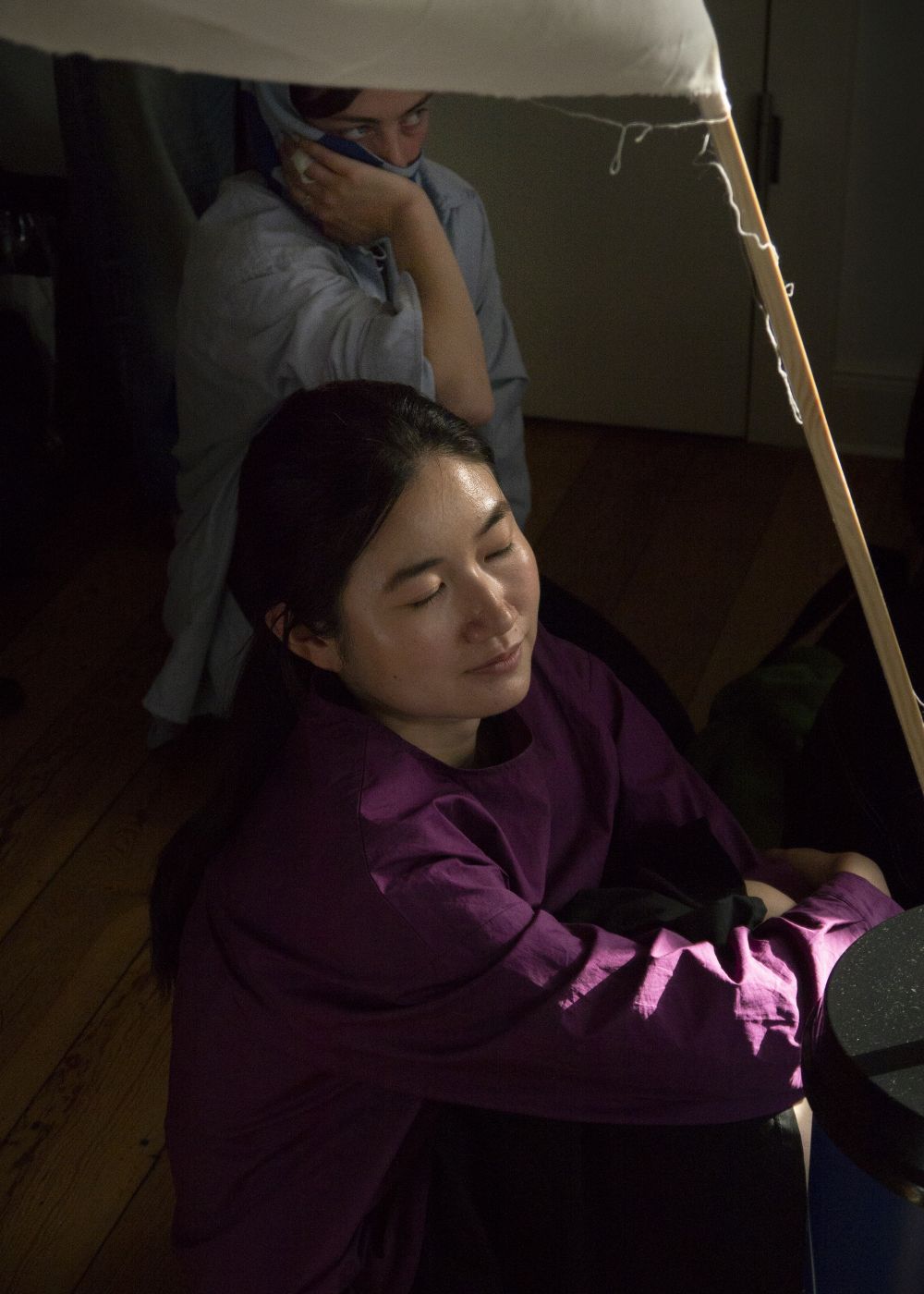
© Senya Corda
6/136/13
© Senya Corda
© Senya Corda
7/137/13
© Senya Corda
© Senya Corda
8/138/13
© Senya Corda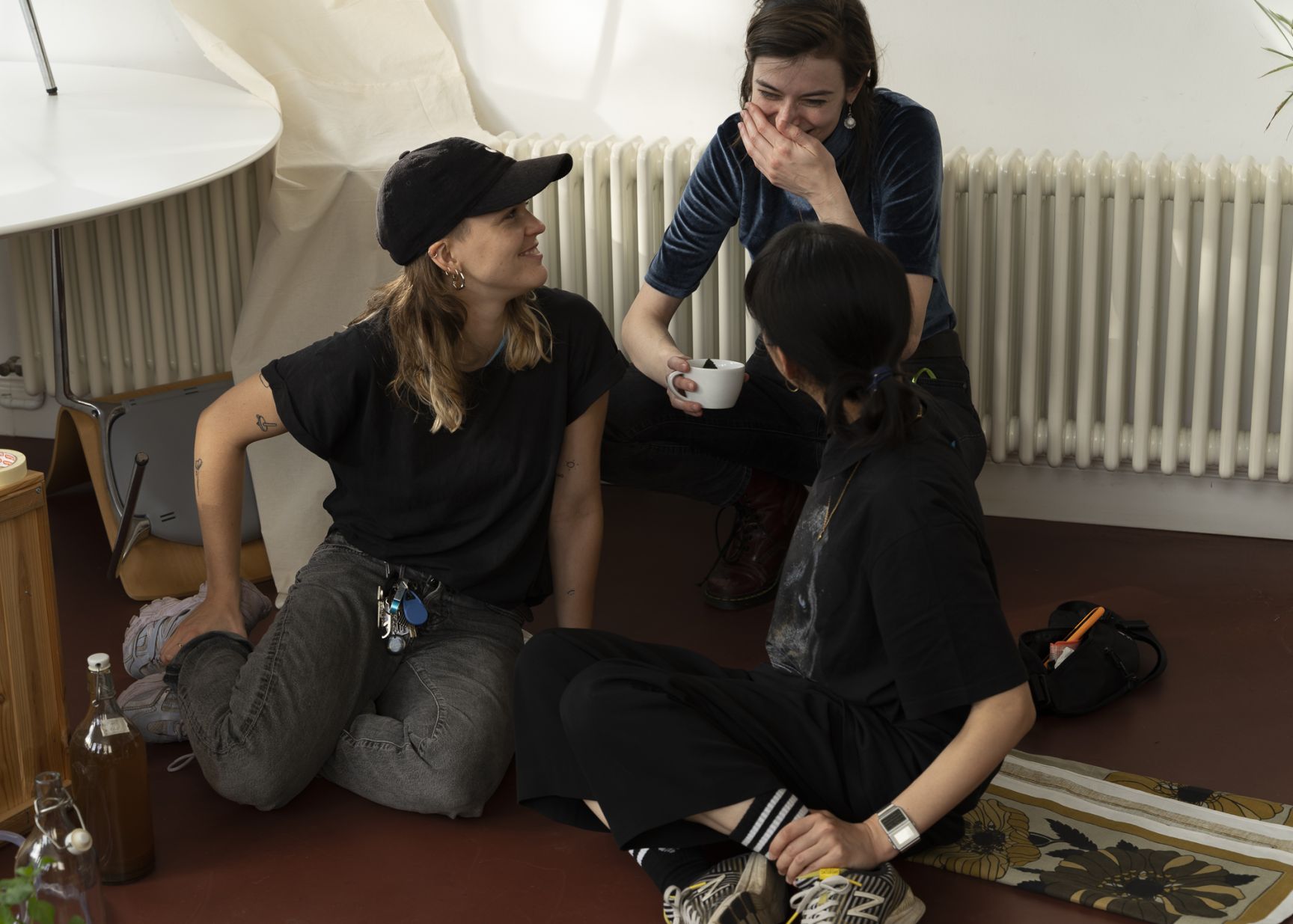
© Senya Corda
9/139/13
© Senya Corda
© Senya Corda
10/1310/13
© Senya Corda
© Senya Corda
11/1311/13
© Senya Corda
© Senya Corda
12/1312/13
© Senya Corda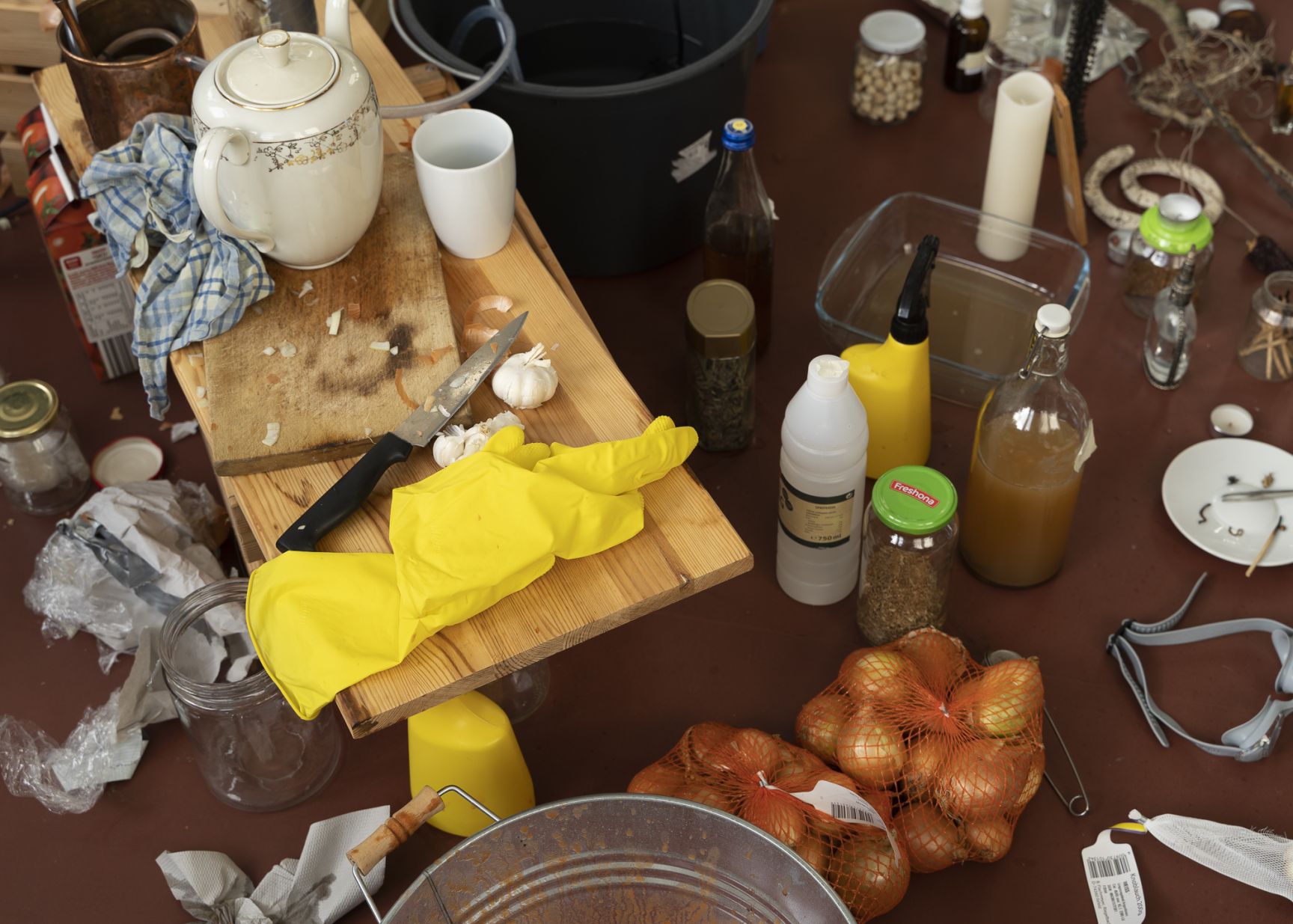
© Senya Corda
13/1313/13
© Senya CordaAlanna Lynch was invited by Silk Felber. Here you can find the announcement of Silke Felber's lecture on »Intervening (with) Smells«.
Footnotes
(1) Herz, Rachel. 2002. Influences of Odors on Mood and Affective Cognition. In Olfaction, Taste and Cognition, edited by C. Rouby, B. Schaal and A. Holley. Cambridge: Cambridge University Press, 160-177.
Haviland-Jones, Jeannette M., Patricia Wilson, and Robin Freyberg. 2016. Olfaction: Explicit and Implicit Emotional Processing. In Handbook of Emotions, Fourth Edition, edited by L. Feldman Barrett, M. Lewis, and J. M. Haviland-Jone. London: Guilford Press, 199-214.
(2) Herz 2002.
(3) Young, Benjamin D. 2019. Olfactory Imagery: is Exactly What it Smells Like. Philosophical Studies.
(4) Reinarz, Jonathan. 2014. Past Scents: Historical Perspectives on Smell. University of Illinois Press, 11.
Further References
Anderson, Ben. 2009. Affective Atmospheres. Emotion, Space and Society, 2(2), 77-81.
Drobnick, Jim. 2018. Smell, Terrorism and Performance. Performance Research, 23, 4-5, 355-361.
Hsu, Hsuan. 2020. The Smell of Risk: Environmental Disparities and Olfactory Aesthetics. NY: NYU Press.
Joronen, M., & Ghantous, W. 2024. Weathering Violence: Atmospheric Materialities and Olfactory Durations of ›Skunk Water‹ in Palestine. Environment and Planning E: Nature and Space, 7(3).
Rindisbacher, Hans J. 2006. The Stench of Power. In The Smell Culture Reader, edited by J. Drobnick. Oxford: Berg, 137-147.
